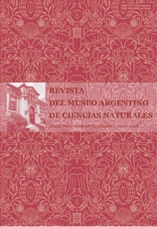Feeding ecology of the siluriform Pimelodella laticeps Eigenmann, 1917 in a Pampean stream from Argentina
Resumen
Pimelodella laticeps Eigenmann, 1917 is the most abundant siluriform in the El Pescado Stream, located in the depressed region known as pampean region (Buenos Aires, Argentina). To characterize its feeding habits in this environment, we analyzed the dietary contents on seasonal samplings from May 1991 through August 1993. To evaluate the relative contribution of the different dietary components, the index of relative importance (IRI) was used. Pimelodella laticeps preferred sectors with aquatic macrophytes, and predated mainly on organisms from the periphytic and benthic communities. The main food was cyclopoid copepods, which taxa usually have littoral or benthic habitats, and only to a lesser extent are components of the plankton community. The planktonic organisms available in the environment were analyzed by the Olmstead-Tukey-test, which diagram indicated that the dominant items were copepods, ostracods, and chironomids. Chydorid cladocerans, harpacticoid copepods, mayfly larvae, and amphipods also became dominant but less frequently. To understand the feeding strategies of P. laticeps, the fish diet was compared with the available plankton as analyzed by a nonparametric multivariate analysis (permutation-based one-way ANOSIM). Pimelodella laticeps consumed almost no phytoplankton, while the discriminating items from the latter assemblage were identified as having high values in the environment.
Palabras clave
arroyo pampeano; bagre gris; relaciones tróficas
Texto completo:
PDF (English)Enlaces refback
- No hay ningún enlace refback.

This work is licensed under a Creative Commons Attribution 3.0 License.

